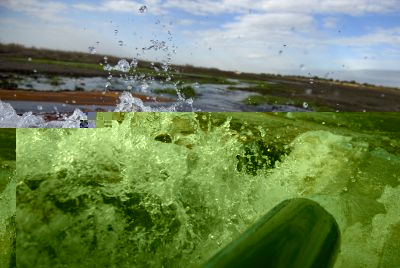Heavy rains bring Spanish wetlands back to life

An environmentally valuable expanse of Spanish wetlands that dried up through mismanagement of water resources and drought is once again awash with water due to heavy rainfall, an official said Tuesday.
Over 1,200 hectares (3,000 acres) of the wetlands of the Tablas de Daimiel National Park are flooded, the highest level since 1997, up from just 67 hectares on January 7, a park spokesman said.
The heavy rains also put out an underground peat fire which had raged at the wetlands, recognised by UNESCO as environmentally valuable because of their importance to both resident and migrating birds
The wetland, located some 185 kilometers (115 miles) south of Madrid, received the heaviest rains since records began in 1941.
"The park was dead, and all you could see were the bones of dead fish," daily newspaper El Pais quoted the last fisherman to make a living at the park, 81-year-old Julio Escuderos, as saying on Sunday.
At the start of the year the government began diverting water from the Tagus River some 150 kilometres away to the wetlands through an underground pipe but the heavy rains meant far less water needed to be tranfered than had been expected.
"The park has gone through a critical situation due to a five-year drought. Thanks to the rains and an emergency transfer of water, the park has come through," Spain's secretary of state for water, Josep Puxeu, said Friday.
The Tablas de Daimiel National Park began drying up in the 1960s when the water was first drained from the area so the land could be used for agriculture and to irrigate crops.
An exceptionally dry summer worsened the situation and caused the peat subsurface to catch fire as cracks in the dry earth allowed air to penetrate and oxidise the peat, making it combustible.
The Tablas de Daimiel National Park is the centrepiece of the 25,000-hectare Mancha Humeda wetlands zone of south-central Spain, home to diverse birdlife.
In 1980 UNESCO placed it on its list of Biosphere Reserves but last year it warned Spain that it had three years to restore the zone or it would be withdrawn from the list. The European Commission had also urged Madrid to act.
Subscribe to Independent Premium to bookmark this article
Want to bookmark your favourite articles and stories to read or reference later? Start your Independent Premium subscription today.

Join our commenting forum
Join thought-provoking conversations, follow other Independent readers and see their replies